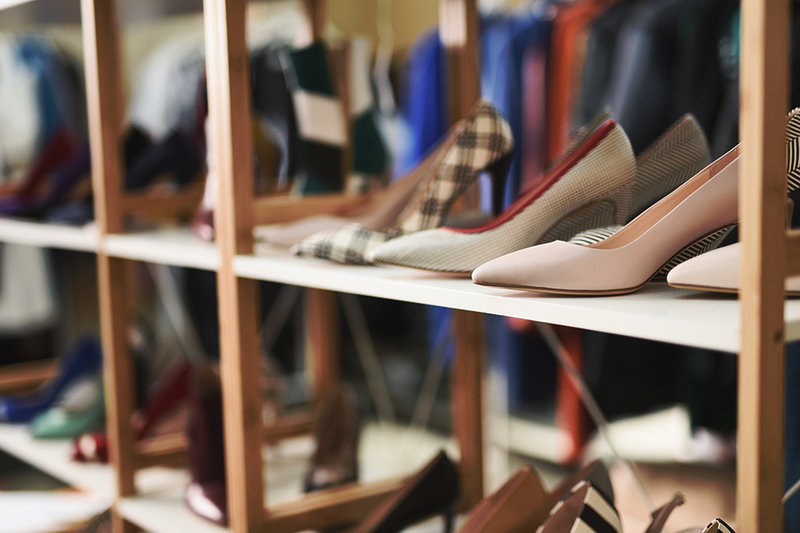Rising footwear and apparel costs
Footwear and apparel prices for US shoppers are rising faster than they have done in years. United States Fashion Industry Association (USFIA) president Julia Hughes and Footwear Distributors and Retailers of America (FDRA) president and CEO Matt Priest ask: Is it time to end the outdated footwear and apparel tariffs?

In May footwear and apparel prices jumped year-over-year at the sharpest rate in 32 years. Buried within this increasing price tag, a relic of 1930s trade policy, adds even more hidden costs for consumers as they emerge from the global pandemic.
This year marks the 91st anniversary of the Smoot-Hawley Tariff Act that added tariffs on thousands of products across the US. With similar times of economic uncertainty and calls to protect domestic industries, Senator Reed Smoot (R-UT) and Representative Willis Hawley (R-OR) introduced and shepherded this massive bill through Congress. The new tariffs deepened the Great Depression and led to retaliation on US goods abroad. In the decades after, Congress shifted its tariff-setting responsibility over to the White House (something to which Americans have become painfully aware thanks to the Trump tariffs). The biggest legacy from the 91-year-old Smoot-Hawley Tariff Act, however, is its effect on the high prices of shoes and clothes we purchase today.
Smoot-Hawley put in place extremely high tariffs for footwear and apparel, and for these two sectors, high tariffs have been a reality for nearly a century. The US places an average tariff rate of just 1.5% on imports, but it hits footwear with 13.2% tariffs on average and apparel at 14.3%. For some of the clothes we wear, these tariffs can reach rates as high as 43%. For shoes, the rate can be a shocking 67%.
Uncle Sam is saddling consumers with soaring tariffs on footwear and apparel. Average tariffs per pair on footwear imports rocketed to the highest April on record, in turn driving the average import cost on footwear to the highest April on record. Similarly, the average tariff rate on apparel imports reached the second-highest April on record.
These high tariffs have a real and tangible impact on American consumers, because tariffs act as hidden taxes. As we slowly emerge from a global pandemic, millions of Americans are shopping. The employee returning to the office, the parent buying for back-to-school, the family getting ready to travel again, the athlete finally able to compete again – all pay this hidden, antiquated, and unnecessary tax as they buy new clothes and shoes.
While everyone pays this hidden tax, the burden hits working-class individuals and families the hardest. Some of the highest rates in the entire Tariff Code fall on low-value shoes and children’s shoes. The tariffs on classic leather loafers worn by Reed Smoot and Willis Hawley, the authors of the infamous tariff law, would be 8.5% today. The textile upper shoes American families buy for their children usually start with tariff rates at 20%.

The sharp jump in retail prices only compounds the high tariffs, at a time when millions remain jobless. Already, inflationary pressures are mounting as the economy picks up steam in the wake of the pandemic. The Consumer Price Index jumped a year-over-year 5% in May, the largest increase since August 2008. What’s more, according to the Federal Reserve Bank of New York’s Survey of Consumer Expectations for May, fears of inflation in the year ahead hit its highest level on record. In other words, prices are already rising sharply, with consumers fearful of more inflation ahead. At the same time, at more than 9.3 million, the Bureau of Labor Statistics reports the number of unemployed Americans remains well above levels prior to the pandemic.
As we look to these challenges in a post-pandemic world, we have to recognise that the Tariff Code simply does not reflect the realities of the 21st century. In today’s world, leading footwear and apparel companies use global supply chains that depend on international trade and support US workers. Countless new innovations have emerged – Flyknit technology, athleisure categories, breathable fabrics, high-tech water-resistant materials, and recyclable materials, to name a few.
The antiquated apparel chapter of the US Tariff Code meanwhile, still refers to outdated terms like breeches, mens’ and boys’ dressing gowns, petticoats, waistcoats, washsuits, silk swimwear, corsets, and cravats. It maintains the convoluted protection created to maintain the global quota system – even though that tax on consumers was eliminated 15 years ago. The footwear chapter even assesses a higher rate for women’s leather dress shoes than men’s leather dress shoes. In fact, it refers to women and girls in numerous places as “other persons.”
With so many advances over the past 91 years, Congress and the US President must rethink how trade policy impacts innovation when it comes to shoes and clothes designed for US workers and US consumers.
The Biden Administration is committed to a “worker-centric” trade policy. If the President wants to achieve meaningful and significant relief for working-class individuals and families, we have a recommendation that will immediately improve the US economy and return savings to hardworking US families - end the outdated footwear and apparel tariffs immediately. As Smoot-Hawley turns 91 this year, it is time to end its harmful legacy.
Main image credit: Free-Photos / Pixabay
BACK TO TOP
COMMENT